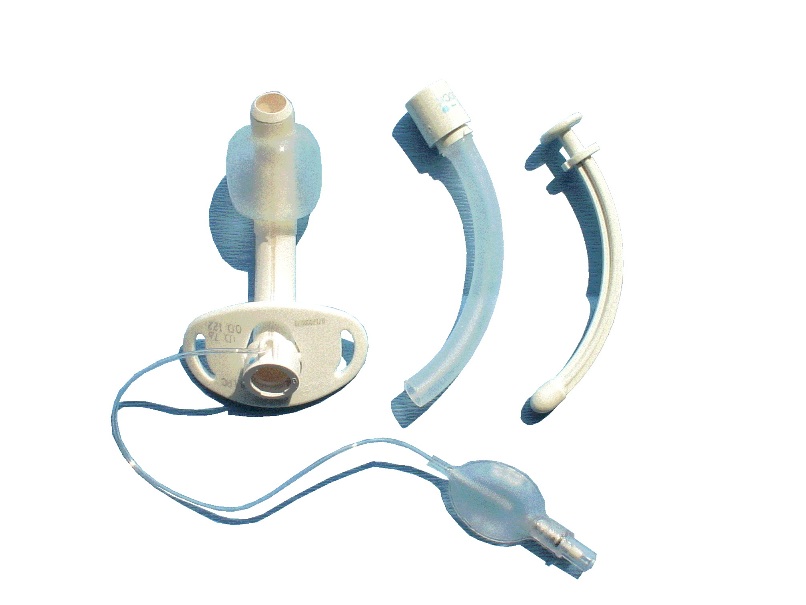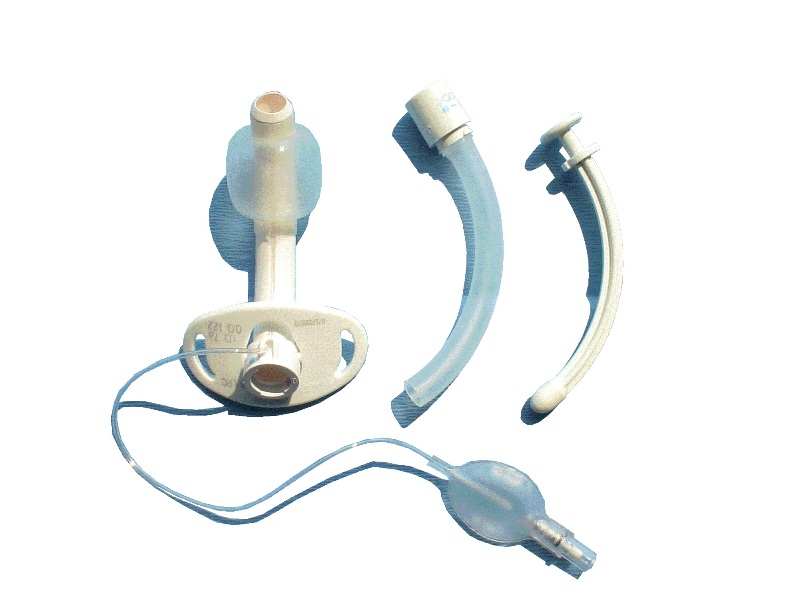TRACHEOSTOMY TUBE, cuffed, int.tube, ster., ID 6.4mm
Valid Article
TRACHEOSTOMY TUBE, cuffed
Definition
A sterile hollow cylinder designed to be inserted into an artificial opening made in the trachea during a tracheotomy to provide a patent airway. It is constructed of plastic and includes an inner cannula. It is cuffed and non-fenestrated. It is secured in position by a tracheostomy tube holder fastened around the patient's neck.
Specifications
Quality standards
- ISO 5366, 2016, edition 1, Anaesthetic and respiratory equipment. Tracheostomy tubes and connectors
- EN 1282-2, 2009, Tracheostomy tubes - Part 2: Paediatric tubes, edition: 3
Technical specifications
- Cannula:
- PVC, silicone
- 90º angled tube with balloon
- non-fenestrated
- open, atraumatic distal end
- proximal end with male conical connector, Ø15 mm
- collar which fits the patient's neck
- radio-opaque
- Tracheal balloon:
- PVC, etc.
- located near the distal end of the cannula
- low pressure
- connected to an inflating duct:
- included in the wall of the tube
- ending in a non-return valve with Luer connection
- with indicator balloon indicating inflation status of the balloon
- Inner cannula:
- removable while leaving the cannula in situ
- proximal end with standard connector, 15 mm Ø for connecting to the ventilation system (by rotation or clip / click system)
- reusable after cleaning it thoroughly
- Guide for insertion
- Fixing strip
- Sterile device, for single patient use
Packaging & Labelling
Unit sterile packaging in peel-open pack
Instructions for use
Choosing the appropriate inner and outer diameter sizes of the tracheostomy tube are important when recommending the initial tracheostomy tube size or tracheostomy tube changes.
A tracheostomy tube from one manufacturer may not correspond to the same size from a different manufacturer as they may have different internal/external diameters or length. Different manufacturers follow different sizing guidelines: some tracheostomy tubes utilise the Jackson sizing system, while other tubes use the ISO method.
The appropriate dimensions are listed on the flange of the tracheostomy tube.
ISO requires that tracheostomy tubes are sized according to the narrowest part of the inner diameter which includes the inner cannula. The outer cannula is measured as the largest diameter of the outer cannula.
Size | Inner Ø | Outer Ø | length | Use for |
4 | 5.0 mm | 9.4 mm | 60 - 65 mm | Child |
6 | 6.4 mm | 10.8 mm | 70 - 76 mm | Adolescent Adult woman |
8 | 7.6 mm | 12.2 mm | 70 - 82 mm | Adult man |





![[KMEDMHIS25-] (mod ICU) CATHETERS, TUBES and DRAINS 2021](/web/image/product.template/574344/image_256/%5BKMEDMHIS25-%5D%20%28mod%20ICU%29%20CATHETERS%2C%20TUBES%20and%20DRAINS%202021?unique=778635f)